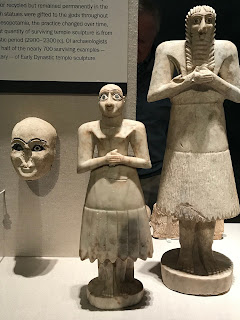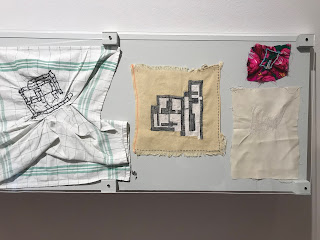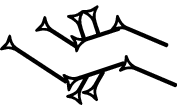Comisarios: Violette Andres (Museo Picasso, Paris) & Emmanuel Guigon (Museo Picasso, Barcelona)
Diseño del montaje: Pedro Azara & Tiziano Schürch
Diseño gráfico exterior: pfp disseny (Quim Pintó & Montse Fabregat)
Construcción del montaje: Artpercent (Favio Monza)
Extensa, exhaustiva y sobria muestra de fotos sobre placas de vidrio tomadas por Picasso a principios del siglo XX, de fotos de los diversos talleres de Picasso tomadas por un gran número de fotógrafos, algunos grandes artistas como Brassaï y Dora Maar, y de experimentos, serios y juguetones a la vez, de Picasso con fotografías, negativos y recortes.
La exposición de unas trescientas cincuenta fotografías, casi todas en blanco y negro, y muchas con impresiones de época, seleccionadas entre las veinte mil que formaban parte de la colección personal de Picasso (y que hoy atesora el Museo Picasso de París), junto con imágenes de coleccionistas y fotógrafos, como Leopoldo Pomés (algunas inéditas), se completa con algunas obras de arte -esculturas, pinturas, dibujos y grabados- que aparecen en los interiores fotografiados. Fotos con un “estatuto” de obras de arte, como las tomas de Brassaï, la cineasta Nicole Védrès o incluso de Leopoldo Pomés, y otras con un interés más exclusivamente documental. Las fotos de Dora Maar sobre las etapas de la creación del cuadro Guernica, estarían a caballo entre la obra autosuficiente y el documento.
En algunos casos, las fronteras entre géneros artísticos se diluyen: Picasso grababa sobre fotografías, fotografiando el resultado, mientras que en otros casos pintaba sobre placas de vidrio y revelaba, con distintos tiempos de exposición, los “negativos”, impresiones sobre las que, de nuevo, en ocasiones, volvía a intervenir.
Una primera gran exposición sobre la compleja relación de Picasso, como artista y como modelo, con la fotografía, sobre cómo se relacionó con este medio, que sugiere que Picasso, en tanto que gran ojo que “vampirizaba” lo que le rodeaba, fue, en el fondo, un “fotógrafo” voraz, como lo definía Man Ray.
Construcción del montaje: Artpercent (Favio Monza)
Extensa, exhaustiva y sobria muestra de fotos sobre placas de vidrio tomadas por Picasso a principios del siglo XX, de fotos de los diversos talleres de Picasso tomadas por un gran número de fotógrafos, algunos grandes artistas como Brassaï y Dora Maar, y de experimentos, serios y juguetones a la vez, de Picasso con fotografías, negativos y recortes.
La exposición de unas trescientas cincuenta fotografías, casi todas en blanco y negro, y muchas con impresiones de época, seleccionadas entre las veinte mil que formaban parte de la colección personal de Picasso (y que hoy atesora el Museo Picasso de París), junto con imágenes de coleccionistas y fotógrafos, como Leopoldo Pomés (algunas inéditas), se completa con algunas obras de arte -esculturas, pinturas, dibujos y grabados- que aparecen en los interiores fotografiados. Fotos con un “estatuto” de obras de arte, como las tomas de Brassaï, la cineasta Nicole Védrès o incluso de Leopoldo Pomés, y otras con un interés más exclusivamente documental. Las fotos de Dora Maar sobre las etapas de la creación del cuadro Guernica, estarían a caballo entre la obra autosuficiente y el documento.
En algunos casos, las fronteras entre géneros artísticos se diluyen: Picasso grababa sobre fotografías, fotografiando el resultado, mientras que en otros casos pintaba sobre placas de vidrio y revelaba, con distintos tiempos de exposición, los “negativos”, impresiones sobre las que, de nuevo, en ocasiones, volvía a intervenir.
Una primera gran exposición sobre la compleja relación de Picasso, como artista y como modelo, con la fotografía, sobre cómo se relacionó con este medio, que sugiere que Picasso, en tanto que gran ojo que “vampirizaba” lo que le rodeaba, fue, en el fondo, un “fotógrafo” voraz, como lo definía Man Ray.




















































